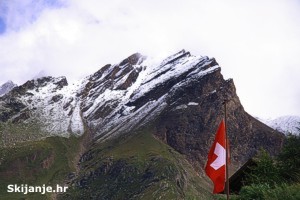
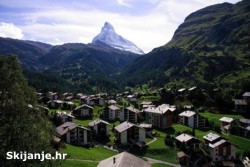 Comparisons such as; “You could be the next Switzerland”, working as a “Swiss clock”, "as safe as a Swiss bank” or “full of holes like Swiss cheese”, are by no means accidental but a proof of Switzerland’s outstanding national promotion and brand recognition. The case of Switzerland shows that for world wide recognition and popularity, size and population numbers are not as crucial as having a clear goal and dedications to the same.
Comparisons such as; “You could be the next Switzerland”, working as a “Swiss clock”, "as safe as a Swiss bank” or “full of holes like Swiss cheese”, are by no means accidental but a proof of Switzerland’s outstanding national promotion and brand recognition. The case of Switzerland shows that for world wide recognition and popularity, size and population numbers are not as crucial as having a clear goal and dedications to the same.
Swiss’ recognizable political and economic impartiality has brought plenty of good and very little of bad. Reasons for this lay in extremely well balanced relationship between the “outside world” and the multiethnic Switzerland. Furthermore, Swiss people are also extremely mindful of the concept of hard labour, business investing in general, and in tourism as well.
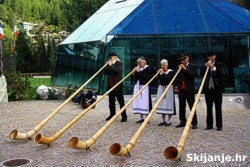 This is what makes Swiss’ tourism successful. Intact nature, national heritage and the gastronomic-adrenaline tourism combined with alpine tourism is what makes Switzerland different from other countries. Ski resorts are up to date; functioning by the highest standards, in order to match every desire of the well-heeled guests. Additional offer, as well, makes Swiss resorts more attractive than the rest. In addition to skiing, there are other activities available. They differ from sports associated to skiing, leisure activities and gastronomy offer to natural and cultural sights at almost every corner.
This is what makes Swiss’ tourism successful. Intact nature, national heritage and the gastronomic-adrenaline tourism combined with alpine tourism is what makes Switzerland different from other countries. Ski resorts are up to date; functioning by the highest standards, in order to match every desire of the well-heeled guests. Additional offer, as well, makes Swiss resorts more attractive than the rest. In addition to skiing, there are other activities available. They differ from sports associated to skiing, leisure activities and gastronomy offer to natural and cultural sights at almost every corner.
Perfectionism and attentiveness for the environment as well to the guests go hand in hand. Swiss people are extremely quick to respond to the profit that tourism brings. In combination with an excellent presentation, Swiss manage to cash in almost everything they have to offer. In the end, they are left with a substantial sum of francs in their pockets. Prices are considerable but not to Westerners like the Americans, British, French and the Japanese, enjoying Swiss resorts and their offer “left and right.”
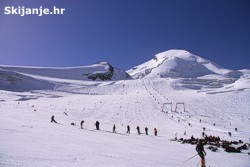 There are a few ski regions Switzerland has to bid, with a few very distinctive and highly extravagant ski resorts. In Valais region Zermatt and Saas Fee resorts dominate, with relatively closely situated Crans Montana and Andermatt. More to the east, beside the borders to Lichtenstein and Italy, Davos (the resort and the town area) and St. Moritz - well-known for its well-heeled regulars, are situated. Slightly headed for the inland, but still in the east part of Switzerland, Lenzerheide, ArosaLaax are placed. In the west, there is an outstanding ski centre 4 Vallees, with Verbier and Veysonnaz. In regions Jungfrau and Eiger, most distinctive are Wengen and Adelboden resorts, with Gstaad and Les Diablerets - Glacier 3000 to the west in the near area. This list contains strictly well-known Swiss resorts. If a significant number of other, "smaller” ones was added, it could make this list go on and on indefinitely. and
There are a few ski regions Switzerland has to bid, with a few very distinctive and highly extravagant ski resorts. In Valais region Zermatt and Saas Fee resorts dominate, with relatively closely situated Crans Montana and Andermatt. More to the east, beside the borders to Lichtenstein and Italy, Davos (the resort and the town area) and St. Moritz - well-known for its well-heeled regulars, are situated. Slightly headed for the inland, but still in the east part of Switzerland, Lenzerheide, ArosaLaax are placed. In the west, there is an outstanding ski centre 4 Vallees, with Verbier and Veysonnaz. In regions Jungfrau and Eiger, most distinctive are Wengen and Adelboden resorts, with Gstaad and Les Diablerets - Glacier 3000 to the west in the near area. This list contains strictly well-known Swiss resorts. If a significant number of other, "smaller” ones was added, it could make this list go on and on indefinitely. and
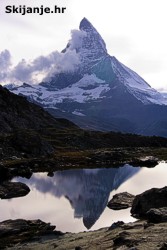 What is it that makes Swiss ski resorts stand out from others? There are a few basic characteristics. First of all, the height above sea level of Swiss resorts is quite remarkable - with glaciers often reaching nearly 4000 m of height rather than 3000 m, where abundant snow conditions are guaranteed. Trails are outstandingly groomed, and with vast off - piste skiing potential. Precisely this made possible for heliskiing to develop and take hold in Switzerland. For a price of CHF200 - 500, you can take a helicopter flight in a search of a wide, white space waiting only for you. On the other hand, trail infrastructure is of high quality, too. Apart from restaurants, climbers’ lodgings, belvederes, underground trains and up to date gondola lifts, there are also impressive ice caves and a whole variety of other more or less important attractions. Gastronomic offer is exquisite. Home-made, alpine food and local specialties make the top of Switzerland’s gastronomic offer.
What is it that makes Swiss ski resorts stand out from others? There are a few basic characteristics. First of all, the height above sea level of Swiss resorts is quite remarkable - with glaciers often reaching nearly 4000 m of height rather than 3000 m, where abundant snow conditions are guaranteed. Trails are outstandingly groomed, and with vast off - piste skiing potential. Precisely this made possible for heliskiing to develop and take hold in Switzerland. For a price of CHF200 - 500, you can take a helicopter flight in a search of a wide, white space waiting only for you. On the other hand, trail infrastructure is of high quality, too. Apart from restaurants, climbers’ lodgings, belvederes, underground trains and up to date gondola lifts, there are also impressive ice caves and a whole variety of other more or less important attractions. Gastronomic offer is exquisite. Home-made, alpine food and local specialties make the top of Switzerland’s gastronomic offer.
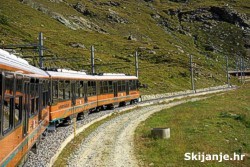 Road infrastructure and access roads to the resorts are fine, but far from megalomaniac highway accesses or fast main roads which would require forest clearance. Swiss philosophy is to adjust to the nature as much as possible. This is the reason why railway is most common mean of transportation in Switzerland, connecting almost every corner of the country. Trains are used for standard intercity transportation with underground trains to avoid the high mountain passes and for transportation to the sightseeing attractions over 3000 m of altitude or for panoramic sightseeing. The most famous panoramic train is the Glacier express, going throughout Switzerland’s most beautiful parts, starting in St. Moritz and finishing in Zermatt.
Road infrastructure and access roads to the resorts are fine, but far from megalomaniac highway accesses or fast main roads which would require forest clearance. Swiss philosophy is to adjust to the nature as much as possible. This is the reason why railway is most common mean of transportation in Switzerland, connecting almost every corner of the country. Trains are used for standard intercity transportation with underground trains to avoid the high mountain passes and for transportation to the sightseeing attractions over 3000 m of altitude or for panoramic sightseeing. The most famous panoramic train is the Glacier express, going throughout Switzerland’s most beautiful parts, starting in St. Moritz and finishing in Zermatt.
To sum it all up; Switzerland’s offer includes a little bit of everything that other ski resorts have to offer. Switzerland offers wide plains to ski on as French resorts do, with Austrian and German punctuality (or even slightly more than that) among a great deal more that is characteristic for other European resorts. In other words, there are numerous ski jewels in the heart of Alps, just waiting for you to discover them. Once you had a taste of it, you’re sure to be back for more!
No comments:
Post a Comment